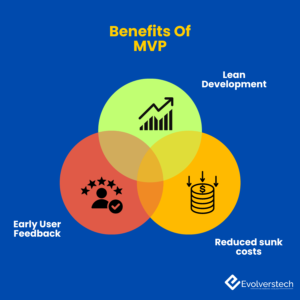How To Build a Minimum Viable Product
Table of Contents:
- What is a Minimum Viable Product (MVP)?
- How to choose the minimum viable product
- The advantages of creating an MVP
- How do I know when to build an MVP?
What is a Minimum Viable Product (MVP)?
The concept of minimum viable products (MVPs) is widely misunderstood.
An MVP is a version of your product that is functional enough for people to test and give feedback, even if it may not be perfect. Its goal is to figure out whether there is a market for your concept and whether it will successfully address a need for your target audience. For Agile projects, which prioritize progressive enhancement and constant feedback by adding new features and improving current ones to an existing product, an MVP is an essential place to start.
So, what exactly is an MVP? By definition, only absolute knowledge is required in order to acquire knowledge. An MVP aims to achieve the following:
- Acquiring knowledge on perceived user value quickly
- Testing assumptions
- gathering input from the actual world to create a more developed version of the product in the future
Below, we’ll cover what you need to know about MVPs and how to create them.
- The version of your product that requires the least amount of user input to gather feedback for iteration and development is known as an MVP, or minimum viable product.
- MVPs might be prototypes or landing pages, among other things.
- Building a more stable product at scale requires first validating an MVP.
How to choose the minimum viable product
- Identify the core features. Make a list of all the features you want in your product.Identify the core features that are essential for the product to function.
- Investigate your clientele. Develop personas representing your key audience to narrow down specific issues that individuals might face, gaining valuable insights for potential solutions.
- Consider the problem-solving aspect of your product. With the aid of customer personas, analyze their distinct pain points and ascertain how your product can effectively address their requirements.
- Formulate a list of necessities and desires. While identifying the fundamental solution, you might brainstorm additional features. Record these ideas. Take note of the essential features for the MVP, keeping in mind the needs of your customers.
- Chart the workflow. Construct a visual sequence of steps delineating what actions the customer must follow to utilize your product. This aids in ensuring no task is overlooked and all necessary components are considered.
- Introduce and collect feedback. Deploy your product to early adopters; note, this isn’t a full-scale launch but an experiment to gauge reactions to your MVP.
- Iterate. Following an Agile framework, iterate through the cycle by enhancing your MVP based on user feedback and progressing through the outlined steps.
The advantages of creating an MVP
- Early User Feedback: Your pre-launch product is often based on assumptions rather than real-time data about user preferences. An MVP places your concept in the hands of real users, providing invaluable insights into whether they love or dislike it. This input guides product and engineering teams in determining the product’s viability and informs decisions on how to refine and expand it.
- Reduced sunk costs: Deploying an MVP helps teams discern the viability of a product early on. If the response indicates that the product isn’t gaining traction, this realization occurs before significant time and resources are invested. Conversely, positive feedback validates the product’s value, streamlining the process of delivering a more streamlined and efficient product.
- Lean Development: An MVP embodies the simplest version of a product that effectively communicates its value to users. Adopting an MVP approach in product development enables teams to concentrate on developing essential features and capabilities initially, fostering a more efficient and focused development process.

How do I know when to build an MVP?
Although it’s theoretically possible to launch a product without an MVP, the risks associated with investing all resources into a fully-featured product that may not succeed on the market can be substantial.
Considerations include the level of innovation and uniqueness in your product—whether it offers something genuinely new or distinctive—making an MVP crucial for testing market reception.
Additionally, an MVP becomes essential in scenarios where there is limited to no competition, serving as a practical means to gauge market interest without existing benchmarks. If your app or platform incorporates unfamiliar or groundbreaking functionality, starting with an MVP is a prudent strategy to avoid heavy investment in a concept that might not gain traction.
On the other hand, in markets with established competitors and similar offerings, you might consider skipping the MVP and focusing on a Proof of Concept (POC) to refine features based on successful existing models.
The advantage of an MVP lies in its status as a finalized, albeit incomplete, product, enabling iterative development based on user feedback and budget constraints. This flexibility allows for the addition or refinement of features based on initial responses and insights gained.
Get free advise on how to build your MVP from EvolversTech. Reach out to us.
